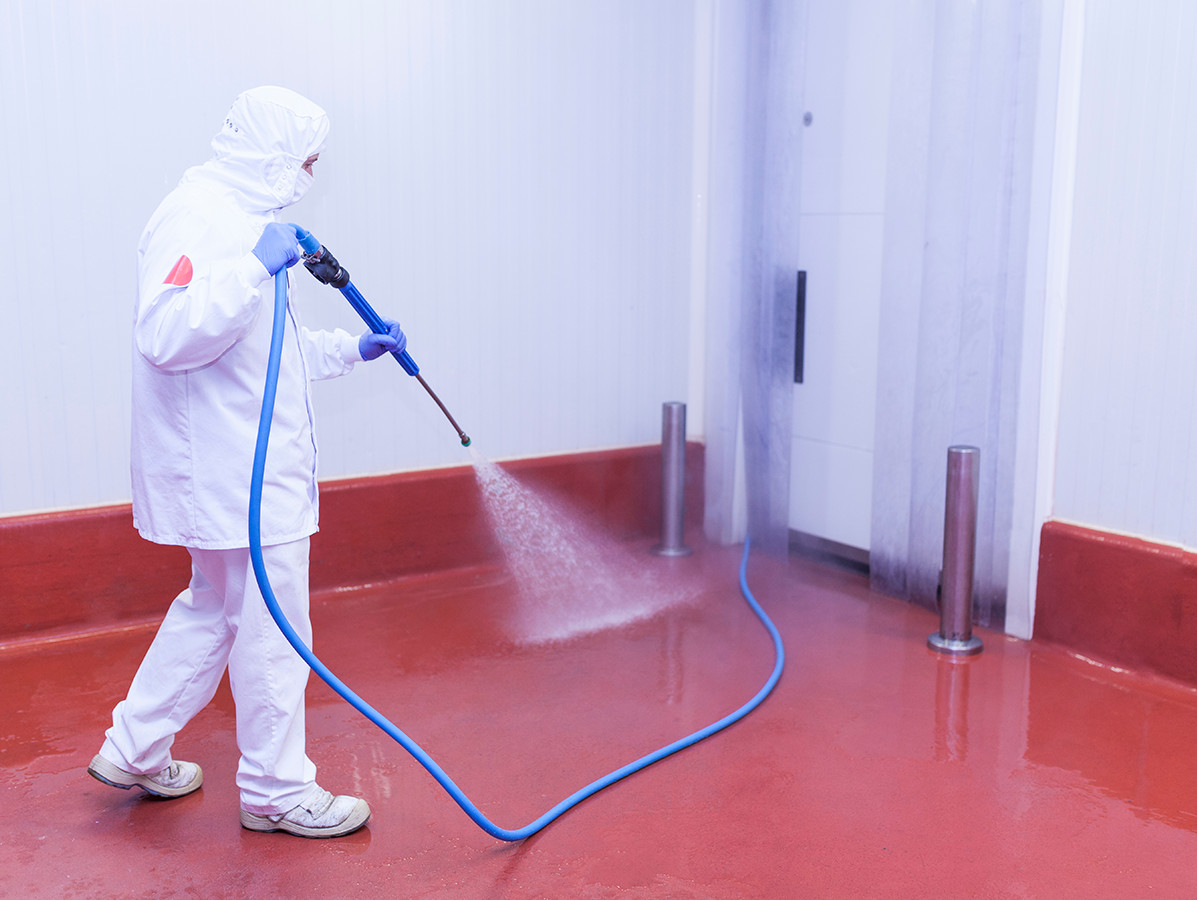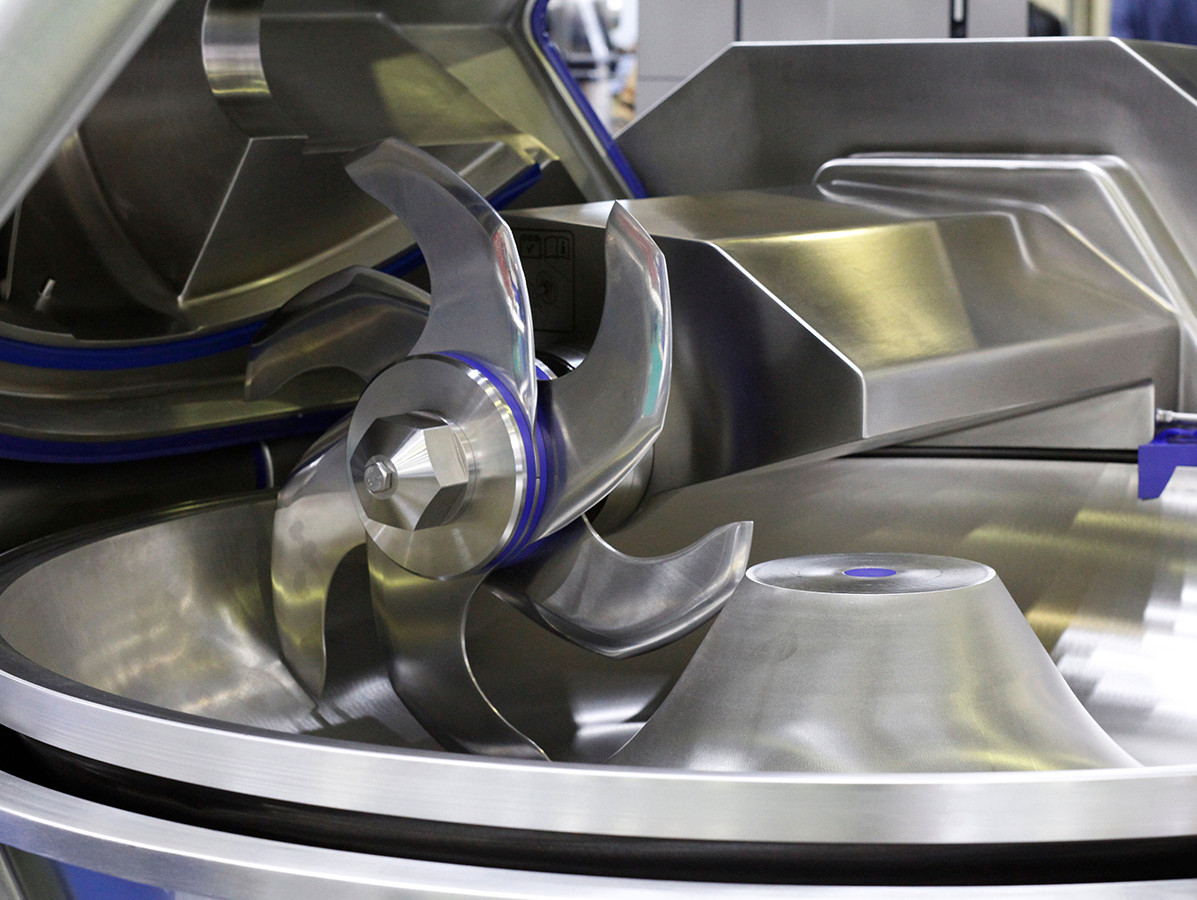
A great deal of research is being carries out into cleaning and disinfection in the food industry. This provided the necessary data; but it didn’t lead to standard protocols. Good cleaning remains tailor-made. And turns out to be difficult in practice. Jürgen Janssens of CID Lines, René Bakker of ITZU Cleaning and Freddy van de Kolk of Rittal analyse the obstacles and come up with practical solutions.
All equipment, machines, cabinets and enclosures, floors and panels used in the food industry, have to meet the fairly well-defined European and national directives. Over the years, the requirements imposed on the machines and their cleaning have changed; partly under the influence of several food trends, says Freddy van de Kolk. He is account manager Food & Beverage at Rittal Zevenaar; producer of enclosures for switchgear and electronics assembly systems, including those for the food industry. “There used to be a relatively large amount of fat, salt, sugars, acids, alcohol and preservatives in food products. These additives prevented contamination to a certain extend. Now that we no longer want these ingredients in our food, it is so much more important that we clean and disinfect production lines properly; an absolute requirement in order to guarantee food safety. These food trends have accelerated the replacement of existing machinery with modern food-safe production machines in recent years. Nowadays, most newly developed machinery is very easy to clean. What goes wrong though, in my opinion, is the choice of materials used. Sometimes these materials are not or less easy to clean, toxic or corrosive. Usually there is ignorance, sometimes the cost price is the cause.”
Jürgen Janssens, division manager Food Industry of the Belgian firm CID Lines, continues on about the role of the cost price for the design: “In addition to cleaning and disinfection products for specific purposes, CID Lines also provides professional advice. In our conversations with machine manufacturers, we notice that they are generally well aware of the importance of the cleanability of the design. But because people are afraid of the impact on the cost price, concessions are made. These adjustments are often made under indirect pressure from the costumer. But as a supplier you have your own responsibility, in my opinion. You have to advice the costumer, even if they didn’t ask for it.”
René Bakker sales manager at ITZU Cleaning, which provides industrial cleaning and facility services in the Netherlands and Belgium, responds to this: “In the longer term, the more expensive design, with a better hygienic design, can be cheaper than such an adapted standard machine. After all, that machine also has to be cleaned. In my opinion, people need to handle more on the return of investment front.”
“What makes a machine easier to clean? The general rule is: the more open a machine or process installation is, the better it is to clean”, says Jürgen Janssens. “But also: the more dangerous for the operator. That’s why protective plates are used. For good cleanability, it is essential that those plates are removed every time cleaning is carried out. In practice, however, it soon turns out that the plates are not put back.”
“Designing machines with light screens can be a solution to guarantee the safety of open machines”, says Freddy van de Kolk. “The moment an operator walks through a light screen, the machines stops fully automatically.”
René Bakker thinks that these kinds of design problems can be avoided now that machines are more often designed in 3D. “They can be better assessed in advance in terms of occupational safety, food safety and cleanability. A cleaning consultant can also assess this. Unfortunately, the cleaner is usually seen as representative on the work floor not as a member of a major investment project. Conversely, the cleaner does not dare to manifest himself as an advisor in the boardroom. There is still a world to be won here. Cleaning is often seen as the final step of a production run. I would like to turn that around: a new production cycle starts with cleaning. It takes time to get such a mentality change in everyone’s mind. It is about awareness and appreciation.

“As a food producer, you need to make clear agreements about tasks and responsibilities when it comes to cleaning”, says René Bakker. “The responsibility for cleaning is often delegated to production, with Quality Assurance (QA) in the trailer. On the other hand, young QA-managers tend to take on the mandate to ensure effective cleaning.”
The problem, according to Jürgen Janssens, is that the QA has to compete with purchasing (cost-sensitive) and production (sensitive to downtime). “I see a QA-manager in a conflict: with increasing production output, food safety is under more pressure: with less time for cleaning, at a lower budget. Too often food companies try to save on cleaning. Until a calamity occurs. Then everything can, may and must be done, and budget isn’t that important anymore. After the problem is solved the urgency unfortunately lapses and awareness disappears again”. He therefore finds it important that external parties/suppliers provide independent advice on different levels in the organisation, and point out the consequences of behavior and choices. “I sometimes come across unwillingness with a food producer. Then I wonder: Does he want to know about the risks present? Everyone runs into phenomena such as Listeria, Salmonella and/or e-coli. The question is: are you going to search for those risks, or are you going to let them happen to you? When you know where the risks are, you carry out targeted cleaning.”
“One of the risks is that operators are not always that alert after an 8 hour workday. I often see that in practice”, says Freddy van de Kolk. “An external party can help with that. They come in fresh and are still alert.”
René Bakker observes that good process descriptions of cleaning and disinfection are often lacking. “Guidelines on cleaning and disinfection of food production machines are included in the BRC and FSC. In the past, a group of experts (representatives of producers, chemical suppliers and cleaning companies) described these processes. The directive is formulated in quite abstract terms, with a methodical steps-by-step approach. The challenge is to translate this into practice. The Vereniging Schoonmaak Research (VSR) had done so, with a ‘Practical guideline for cleaning and disinfection’. There is also an audit tool available, that shows you how you clean. “However, this is insufficiently used by the sector”, he states. “Apparently, the tool is not that accessible and the readability is not at the right level.
Freddy van de Kolk does see advantages in the certification of the cleaning. “It does not have to be difficult: ‘write down what you do, do what you have written down and show that you are doing what you have written down’,” he summarises.
Every company should have a cleaning plan that comes into effect as soon as a line is stopped; the three are in complete agreement on that. “It is essential that the cleaning plan pragmatically translates cleaning guidelines to its own company’s situation”, says René Bakker. “Relevant points that belong in the plan are: are there clear agreements between the operator and the cleaner? Does the cleaner know what to expect? Does the operator have to clean up and disassemble first? The plan states what needs to be cleaned, how often and why. The final results are also clearly defined, including the standards that must be met for effective cleaning. “This is well described in the VSR, including gradations”, explains René Bakker. “And the BRC/IFS contain the necessary information about cleaning and disinfection is and how to ensure this. Often, though, it is unclear who manages the plan.”
“It is and remains tailor-made”, says Jürgen Janssens. “That’s why we always keep looking at the specific situation of the costumer. I look back at a situation that occurred several years ago, when a meat processor failed to get rid of a contamination. Despite frequent and thorough cleaning and disinfection the contamination kept recurring. What did we found out after our investigation? The source was the table of the employee who stamped the approved meat, which was taken out of the room every night.”
When asked about the trends and developments for the coming period in the world of cleaning and disinfection, René Bakker expects a lot from nano-coating that is applied as a thin film on surfaces. “The coating can act as corrosion, water and/or ice protection. The coating reduces friction, provides self-cleaning and is resistant to heat and radiation. The coating also has anti-fouling and antibacterial properties. It works well on walls and in the area of production lines. The technique is also used on tyres and foils, but there is a risk of a negative reaction to the (end) product, for example in the form of oxidation.”
Jürgen Jansenss observes a rise in disinfectants without rinsing. “The quality systems are becoming increasingly strict with regard to the control of undesirable residues. The new disinfectants are the ideal alternative. Moreover, in many cases they meet all the requirements for organic production. This market provides extensive specifications for the detergents and disinfectants used.”
Finally, Freddy van der Kolk believes that cleaning directives will be transposed into legislation in the coming years. “The non-commitment that is there at the moment is disappearing. I expect strict enforcement.”
Photo cleaning: ©David Fuentes Prieto/Shutterstock.com , Photo machine: ©Marina Demkina/shutterstock.com
Source: Vakblad Voedingsindustrie 2020